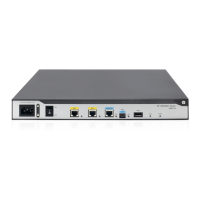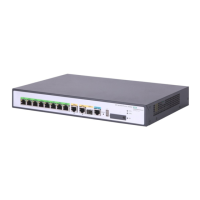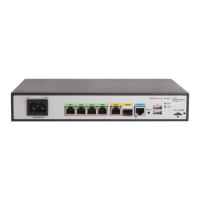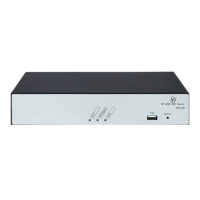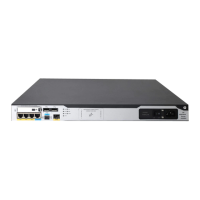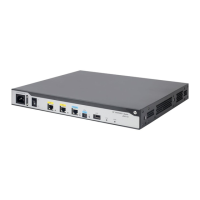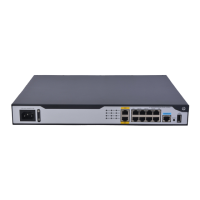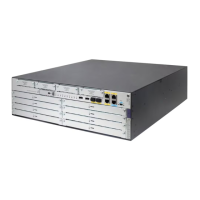52
Step Command Remarks
7. Configure the E1 operating
mode.
• Specify the unframed mode:
e1 e1-number unframed
• Specify the framed mode and
bundle timeslots:
a. (Optional.) undo e1
e1-number unframed
b. e1 e1-number channel-set
set-number timeslot-list
range
By default, an E1 channel operates
in framed mode and is not
channelized.
When you place an E1 channel in
unframed mode, the system
automatically creates a
2.048-Mbps serial interface.
When you bundle timeslots on an
E1 channel in framed mode, the
system automatically creates a
serial interface for the bundle. The
rate of the serial interface is
identical to 64 kbps x number of
bundled timeslots.
8. (Optional.) Shut down the
specified E1 channel.
e1 e1-number shutdown By default, an E1 channel is up.
Configuring a T1 channel
The serial interface created for T1 channels have the same logical features as a synchronous serial
interface. You can configure these serial interfaces in the same way you configure a standard
synchronous serial interface. For more information about configuring synchronous serial interfaces, see
"Configuring WAN interfaces."
To configure a T1 channel:
Step Command Remarks
1. Enter system view.
system-view N/A
2. Enter CPOS interface view.
controller cpos cpos-number N/A
3. Set the framing format for the
T1 channel.
t1 t1-number frame-format { esf |
sf }
The default setting is ESF.
4. Set the clock mode for the T1
channel.
t1 t1-number clock { master |
slave }
The default setting is slave.
5. (Optional.) Enable loopback
on the T1 channel.
t1 t1-number loopback { local |
payload | remote }
By default, loopback is disabled.
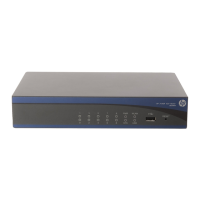
